When it comes to pop-culture tourism, television and cinema get all the credit nowadays. Star Wars takes people to Morocco and Ireland; fans of the movies The Lord of Rings flock to New Zealand; Games of Thrones aficionados rush to Croatia and Iceland, and Amélie has brought so many tourists to Paris that Audrey Tautou should get royalty payments for each person walking into the Café des deux Moulins. But before we were all so absorbed by blockbuster movies and addictive series, we used to read books, some of which contain stories with such a strong sense of place that we wanted to see where they were set or what inspired them with our own eyes. Unlike movies and television series, the descriptions provided by the authors and our imaginations were the only incentive we had, but our curiosity got the best of us, and we flocked to these destinations, changing them forever.
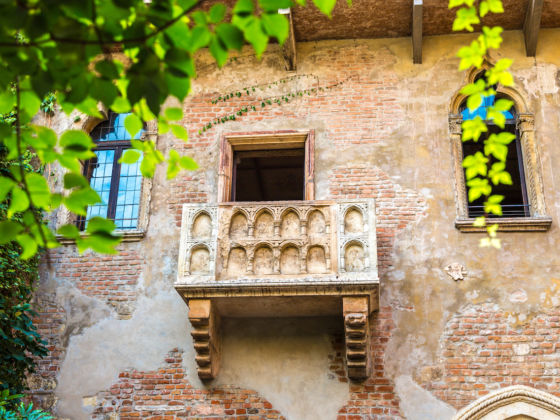

1. The Pacific Crest Trail, USA — Wild by Cheryl Strayed

Photo: Dan Lewis/Shutterstock
Wild is a memoir recounting Cheryl Strayed’s three-month trek on the Pacific Crest Trail in 1995. In a (successful) attempt to heal herself from the loss of her mother four years earlier, the separation of her family, and her divorce, Strayed went on a solo and completely unprepared 1,100-mile hike from the Mojave Desert to California and Oregon to Washington State. Strayed’s determination and resilience in the face of this journey, filled with fears and hardships, was an inspiration to many who decided to give the hike a try. Since the book’s publication in March 2012 (and the release of the movie in December 2014), the number of hikers on the PCT has surged — 1,879 permits were delivered in 2013 against 6,069 in 2017. Because of the “Wild effect,” a new permit system was put in place in 2015, limiting the number of hikers on the PCT starting at the Mexican border, and more information about safety, preparedness, and environmental practices has been made accessible in the hopes of preventing damages to the trail. Even the Pacific Crest Trail Association is riding the wave of the success of Wild by listing the key hikes and spots from the book for future PCT hikers to literally walk into Strayed’s footsteps. They also have a Wild special edition magazine that they send to all those who join, as well as a video featuring Strayed on their website.
2. Vienna, Austria — The Hare with Amber Eyes by Edmund de Waal
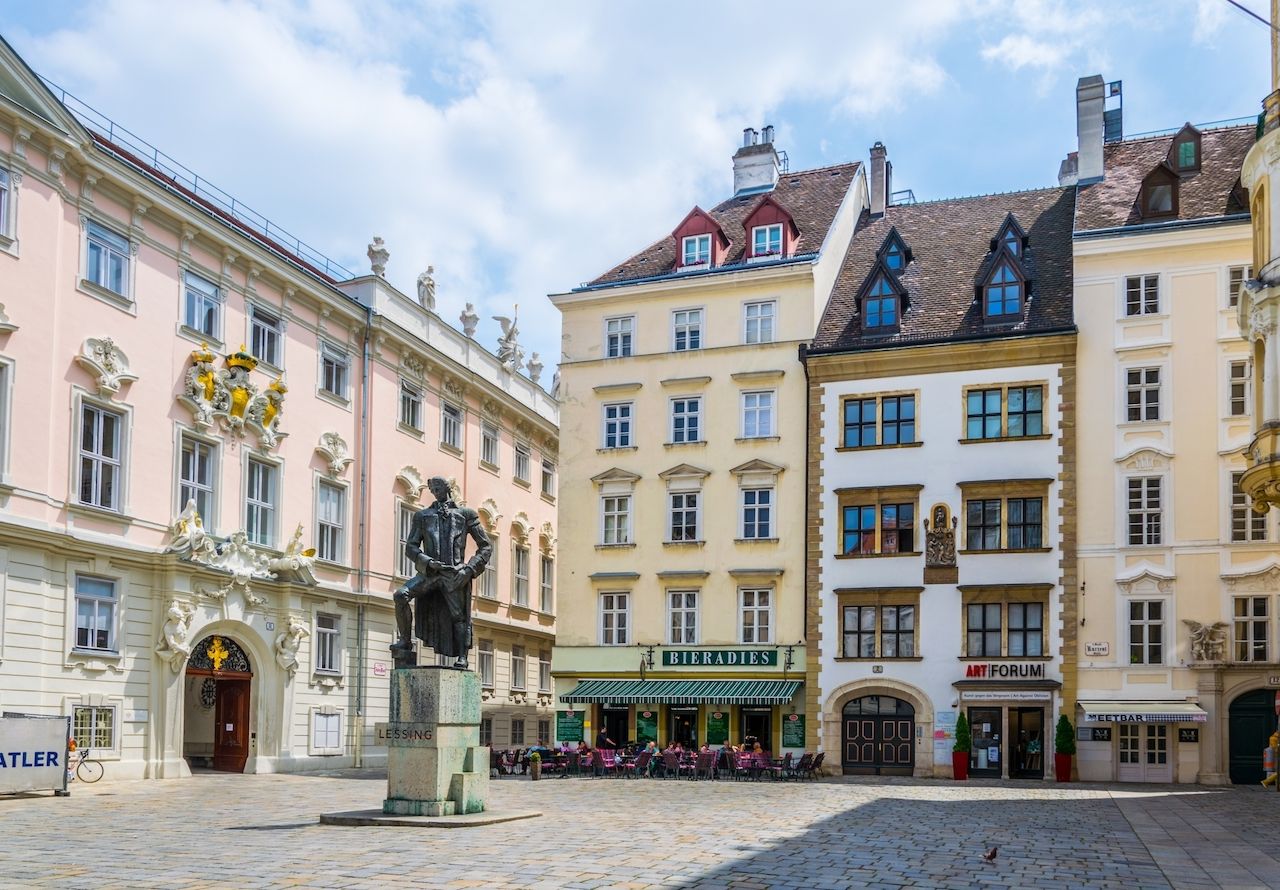
Photo: trabantos/Shutterstock
The Hare with Amber Eyes is a work of historical non-fiction that follows the rich Ephrussi family in Odessa, Paris, and Vienna throughout 140 years of history. In 1938, when Austria was annexed to Nazi Germany, the Jewish family, owners of a large art collection, is dispossessed of everything it owns, including its palace and the artworks it contains. Only one thing is ignored by the looting nazis: a collection of 264 netsuke — wood and ivory carvings from Japan. One of the family maids hides the netsuke in a straw mattress and smuggles them with the determination to bring them back to their rightful owners after the war. Now, de Wall, the author of the book and descendant of the Ephrussi family, owns the collection of carvings.
The Hare with Amber Eyes sold more than one million copies worldwide since its publication in 2009. Readers, enthralled by this story, flocked to Vienna to see and experience the places described in the book. Guided walks organized by Vienna’s tourism bureau are available for those who wish to see the Vienna settings of the bestseller, including the Ephrussi Palace (home of the Ephrussi family before it was taken from them by the Nazis, now a casino), the Burgtheater and Opera House, Café Central, and the Stadttempel Synagogue. But the book also brought forth something much more long-lasting for travelers to Vienna. Last March, the de Waal and Ephrussi families donated the Ephrussi family archive and loaned some of the 264 netsuke to the Jewish Museum Vienna. An exhibition of these new acquisitions will take place in 2019, so fans can see the carvings that inspired The Hare with Amber Eyes and learn more about the somber history of Jews in Austria before, during, and after the Second World War.
3. The Rosslyn Chapel, Scotland — The Da Vinci Code by Dan Brown
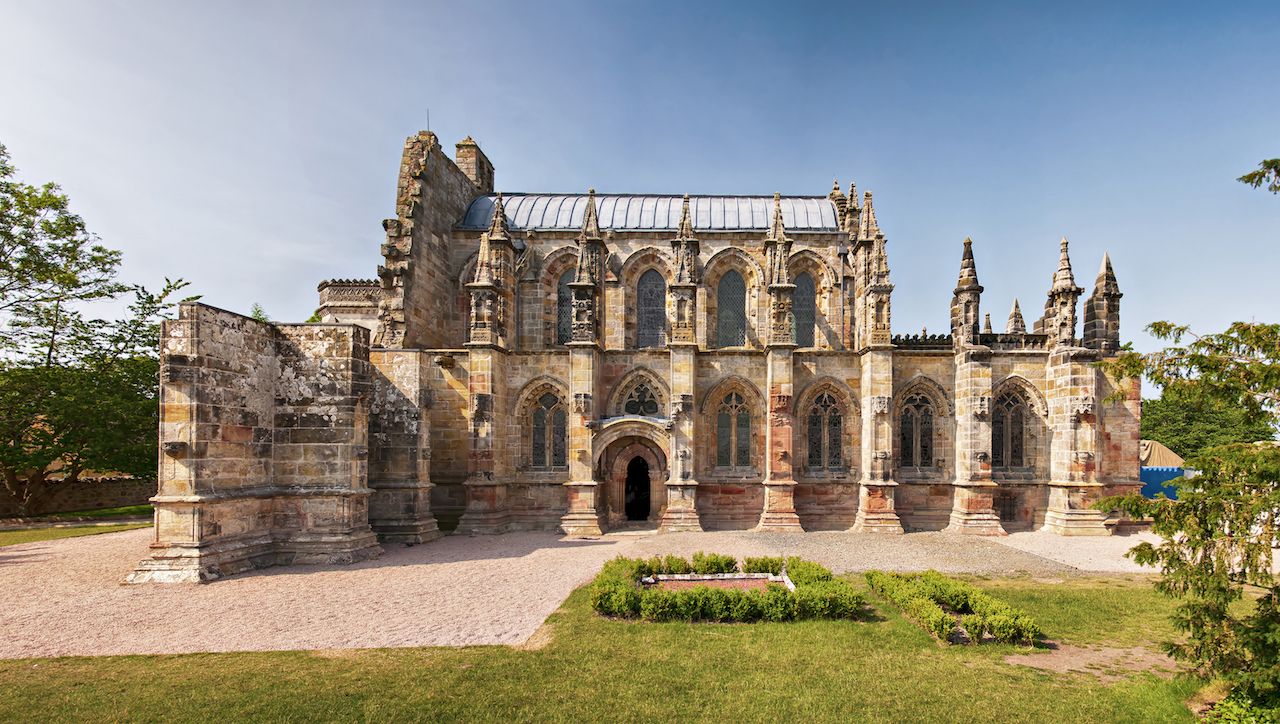
Photo: Antony McAulay/Shutterstock
The Da Vinci Code is a mystery novel about codes hidden inside the works of Leonardo Da Vinci, which lead those who follow them to the Holy Grail. Because the very successful, gripping novel is a work of fiction that makes many references to real-life artworks and places in France and the UK, people wanted to see for themselves which parts of the novel were real and which ones imagined. So, fans of the book traveled en masse to Paris to look for symbols in the Church of Saint-Sulpice and Da Vinci’s pieces in the Louvre, and they visited Scotland to see if the last relative of Jesus Christ was still hanging around the Rosslyn Chapel.
The Guardian explains that in 2004 a surge in the Eurostar ridership from London to Paris could be directly attributed to fans of the book heading to Paris to investigate. And you can still see people counting the number of glass triangles on the Louvre’s inverted pyramid or taking the Da Vinci Code tour at the museum. But the most impressive and lasting effect of the novel is probably what it did to the Rosslyn Chapel in Scotland — the number of visitors to the chapel went through the roof after the publication of the novel (and the release of the movie in 2006). The church’s website explains that The Da Vinci Code has had a profound impact on visitor numbers at the Chapel, which grew to over 176,000 [per year] at their peak, allowing the Trust to complete its major conservation project.”
4. Eastern Townships, Quebec, Canada — The Armand Gamache series by Louise Penny
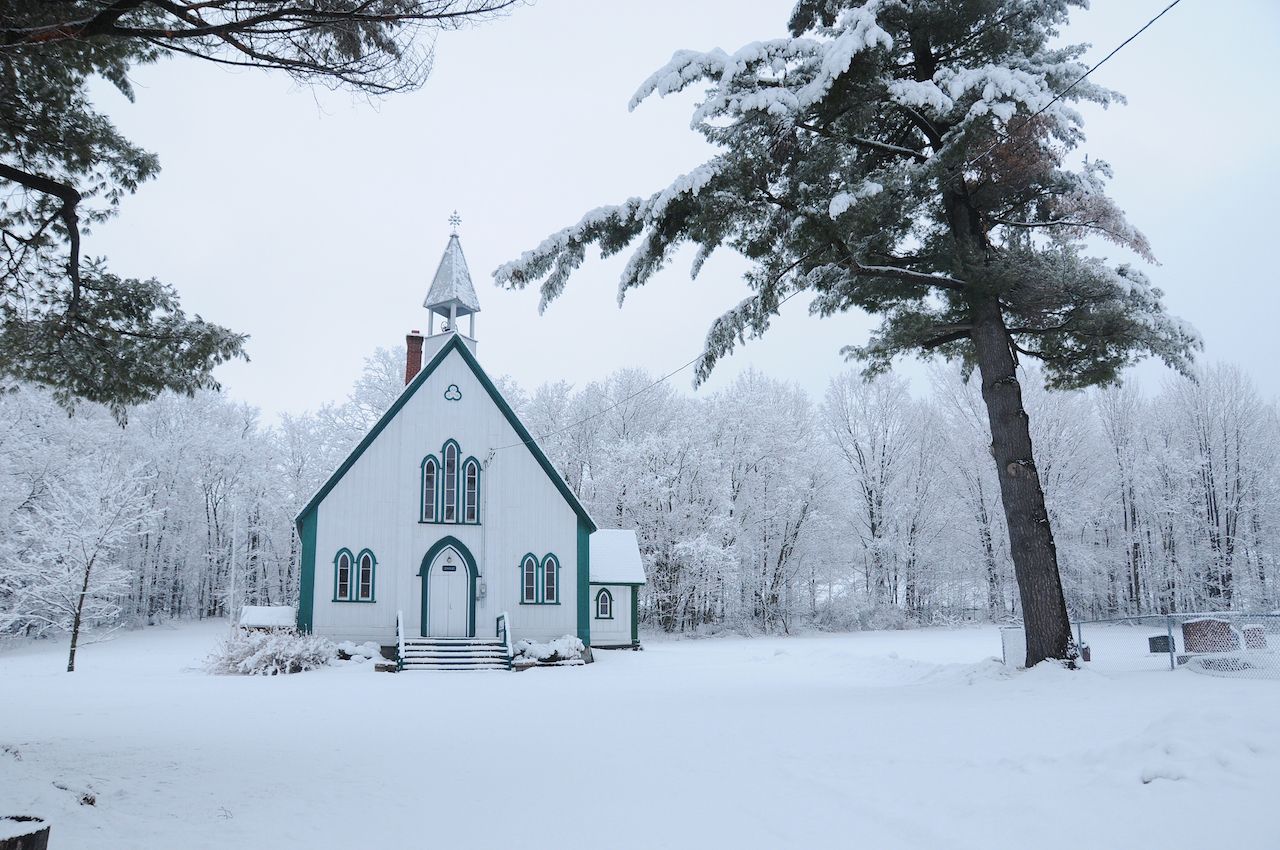
Photo: meunierd/Shutterstock
Of Louise Penny’s 13 best-selling detective novels (soon 14), 10 take place or have a connection with the village of Three Pines, located in the Eastern Townships of Quebec, Canada. Three Pines was imagined by Penny as a very small town filled with friendly, colorful characters that readers can’t help but get attached to. But Three Pines’ real appeal is its atmosphere — the slow pace of life; the sound of snow as the characters walk around the village square in winter; the hours spent in front of the fireplace in the comfortable armchairs of the village bistro; the incredible food and drinks served by Olivier and Gabriel; and the mouth-watering baked goods from Sarah’s bakery. Although readers are perfectly aware of the fictional nature of Three Pines, they also know that Penny drew her inspiration for it from her hometown of Knowlton, Quebec, and its surrounding area.
So, naturally, the people of the Eastern Townships capitalized on the success of Penny’s books (she has sold 6.3 million books worldwide); the tourism bureau has a “Three Pines Inspirations” map on its website, and there are Three Pines tours available for fans. The Knowlton bookstore, Brome Lake Books, has a reading area dedicated to Penny with a little wood stove and a mantle above to display Penny’s novels. On the wall, it has a framed copy of the “Three Pines Inspirations” map, and samples of Penny’s books in various languages line the bookshelves. The owners of the bookstore know that this is a place fans of Penny’s writing flock to in order to check out what inspired Three Pine’s Myrna’s bookstore, but also to see a place that encapsulates the ambiance of the Armand Gamache series that readers love so much. During an interview with The Vancouver Sun in 2017, Penny explains that “we get them [fans of the book] literally by the busloads from the United States, from Australia, from Europe, specifically looking for Three Pines.”
5. Edinburgh, Scotland — Harry Potter book series by JK Rowling
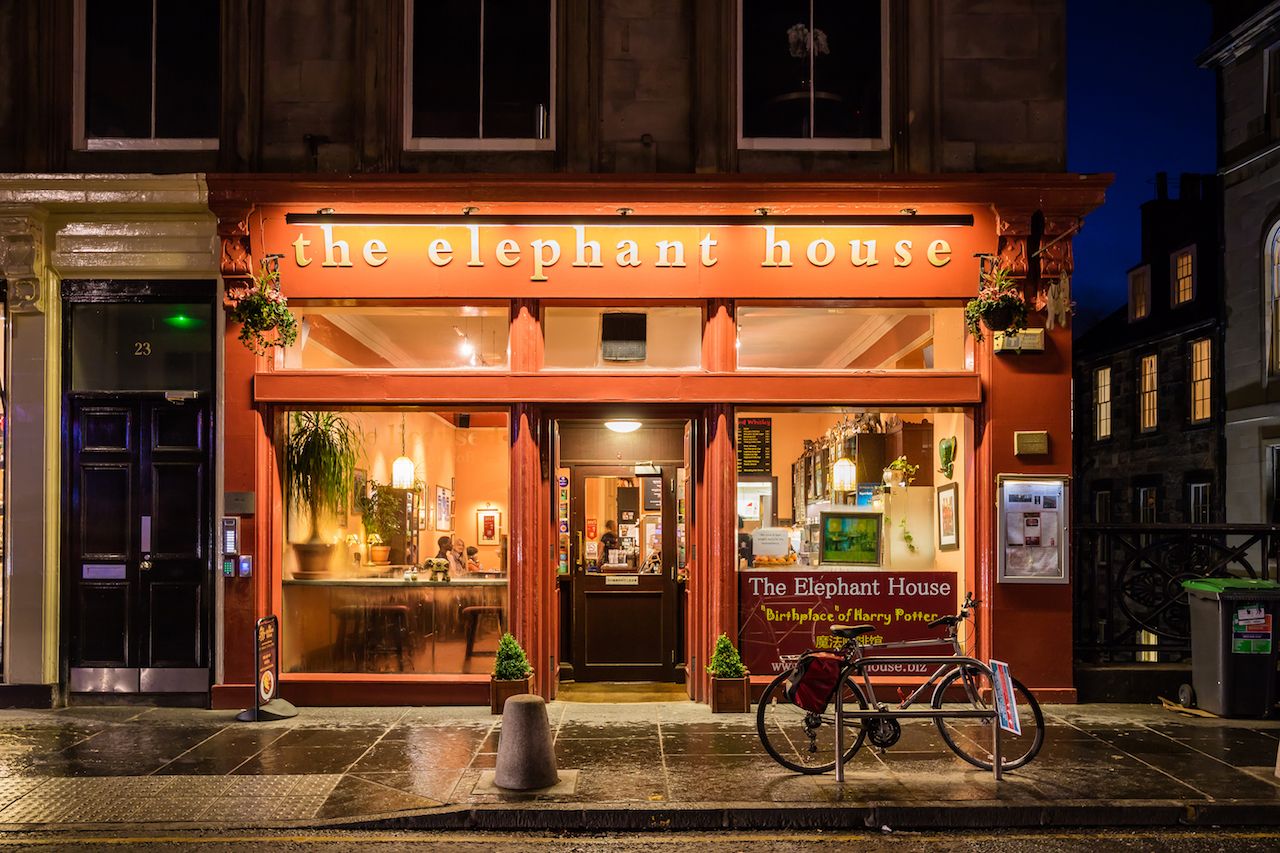
Photo: f11photo/Shutterstock
Although the movies from the Harry Potter franchise are clearly responsible for the surge in popularity of some areas in the UK (Christ Church College in Oxford, the Jacobite Steam train in Scotland, etc.), the same is true of the book series for several spots in Edinburgh.
There are two cafés in which JK Rowling famously wrote parts of the Harry Potter book series. The Elephant House, which advertises itself as “the birthplace of Harry Potter” in its window front and whose bathroom is entirely covered in Harry Potter graffiti, and The Spoon Café, formerly Nicholsons Café, which does not tout its special link to the Harry Potter series as much but has set up a small plaque on the building’s facade saying, “JK Rowling wrote some of the early chapters of Harry Potter in the rooms on the first floor of this building.” Greyfriars Kirkyard, a graveyard located very close the The Elephant House, is another place where Harry Potter fans flock. The names on the tombstones inspired some of the characters in the the series, especially Tom Riddle (AKA Lord Voldemort) whose grave is often covered in flowers and notes from fans. Last but not least, The Balmoral Hotel (room 522) where JK Rowling wrote the last opus of the book series, Harry Potter and the Deathly Hallows, has renamed the room The Rowling Suite. In this room, Rowling famously graffitied a bust of Hermes with “J.K. Rowling finished writing Harry Potter and the Deathly Hallows in this room (552) on 11th Jan 2007.”
6. Monterey, California — Cannery Row by John Steinbeck
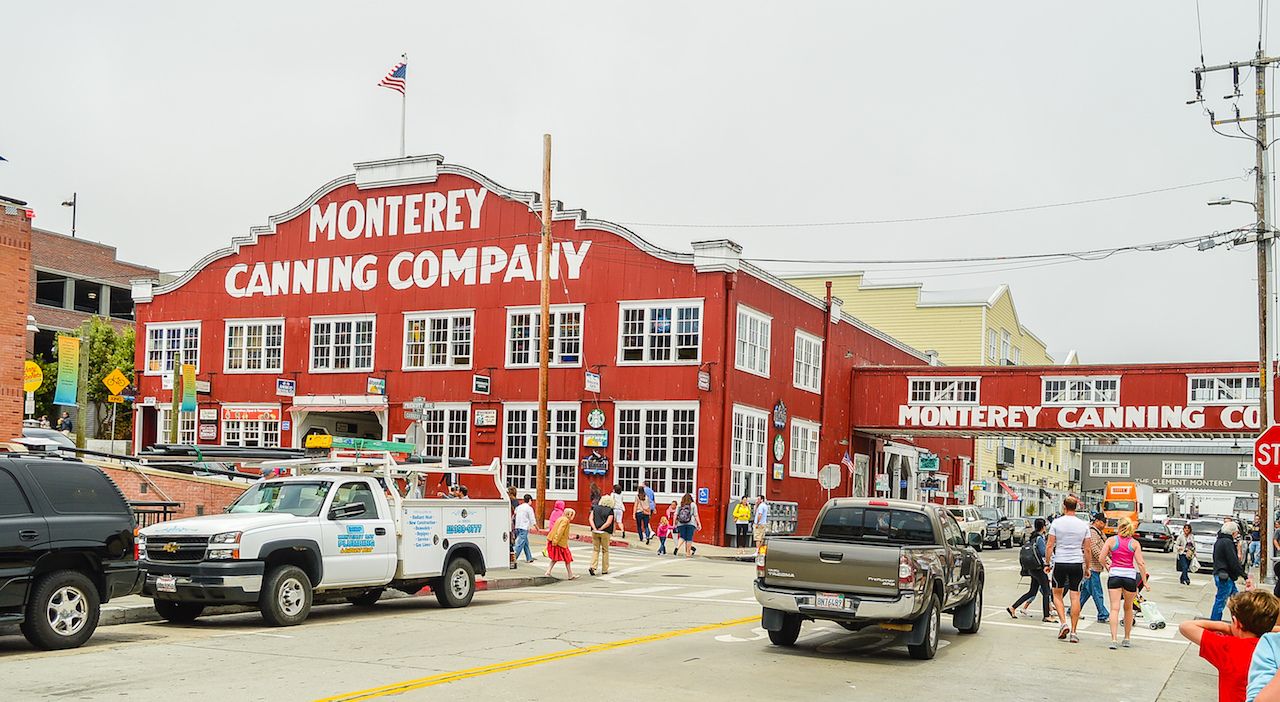
Photo: jejim/Shutterstock
John Steinbeck was born and lived most of his life in the Salinas Valley of California. His most famous works are set in this part of California, including the Grapes of Wrath (1939) for which Steinbeck was awarded the Nobel Prize for literature. Although the entire Salinas Valley has been marked by Steinbeck’s writing, Cannery Row (1945) is the one that brought the most concrete transformation to this area of California.
Cannery Row is a work of fiction about the lives of those who worked and lived in the gritty neighborhood of fish-packing plants in Monterey, California, during the Great Depression. But it’s not the affluence of tourists wanting to see the setting of Steinbeck’s novel that changed this part of Monterey forever; it’s the town of Monterey that willingly transformed itself. Indeed, before Steinbeck’s novel and until 1958, the avenue now known as Cannery Row was called Ocean View Avenue; it was changed to honor Steinbeck and his influential work. Note that Sweet Thursday, the sequel to Cannery Row published in 1954, is set in the same district of Monterey, California.
7. Verona, Italy — Romeo and Juliet by William Shakespeare
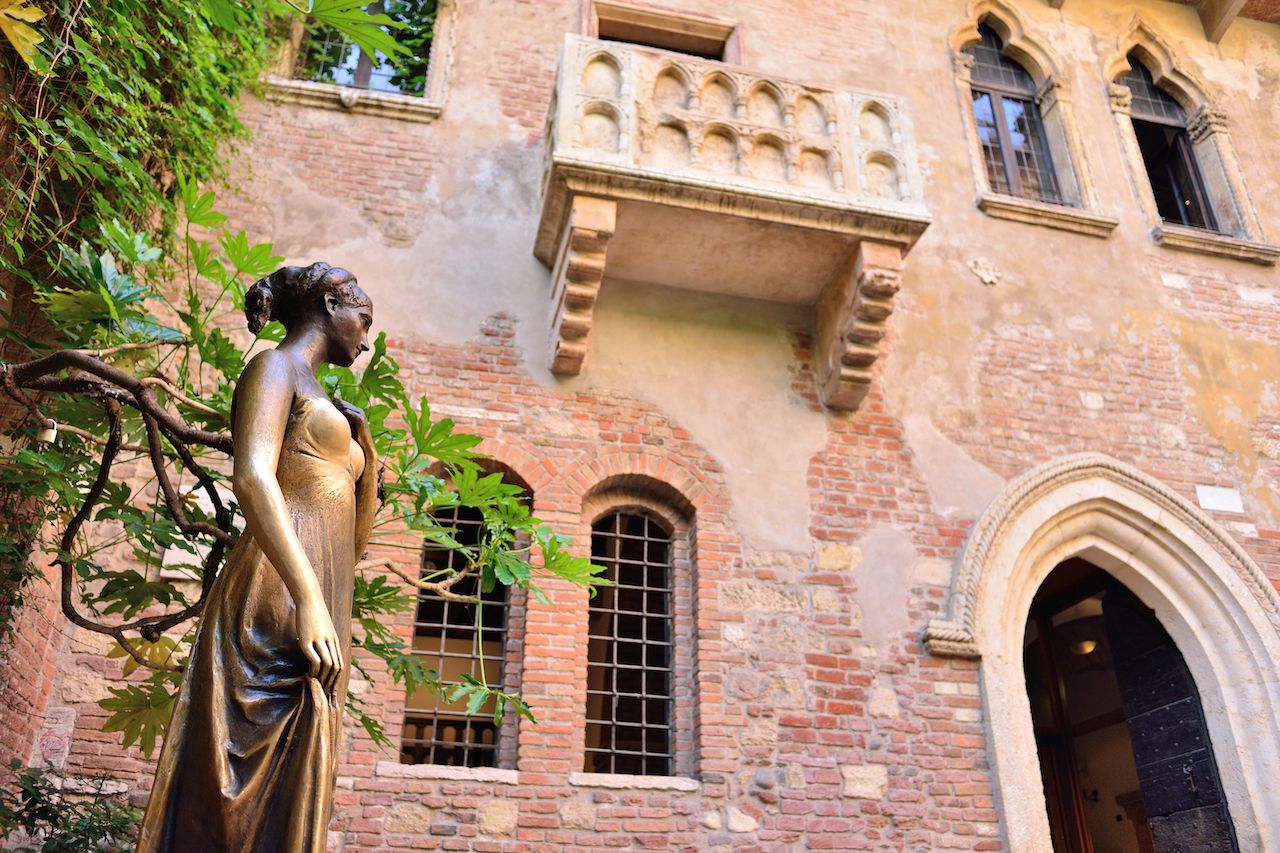
Photo: Stanislav Samoylik/Shutterstock
It may not be a recent New York Times bestseller, but Romeo and Juliet, the late-16th-century tragic play by William Shakespeare, has had a tremendous effect on Verona, Italy, the city where the action takes place. The compelling story of two young people who fall in love despite the violent rivalry between their two families tugged at people’s heart strings so much that the city has been branded “The City of Love,” and the tourism bureau has made sure visitors could get their fill of romantic visits associated with the play. Juliet’s house, a 13th-century building renovated in the early 1900s that belonged to the Dal Cappello (The Capulets) features the famous balcony under which Romeo promised his eternal love and where the lovers reject their families’ feud.
For a fee, you can visit the house and stand on the balcony to relive this scene with your beloved. In the courtyard of the house, below the balcony, stands a bronze statue of Juliet, worn by the hands of the hundreds of thousands of tourists who have touched it in hopes of finding love. Visitors to Verona can also check out Juliet’s tomb, Romeo’s house, and Shakespeare’s bust, but the city has gone even further to capitalize on the throngs of travelers who come to get immersed in the story of the two lovers. “In Juliet’s Footsteps” walking tours are obviously available, but the most over-the-top Juliet-focused tourist activity is Juliet’s Club, a place where all the 50,000 yearly letters addressed to “Juliet, Verona” from all over the world are read, archived, and answered. You can visit the archive, answer a letter, take the tour, take part in the events organized and, of course, buy corny souvenirs.